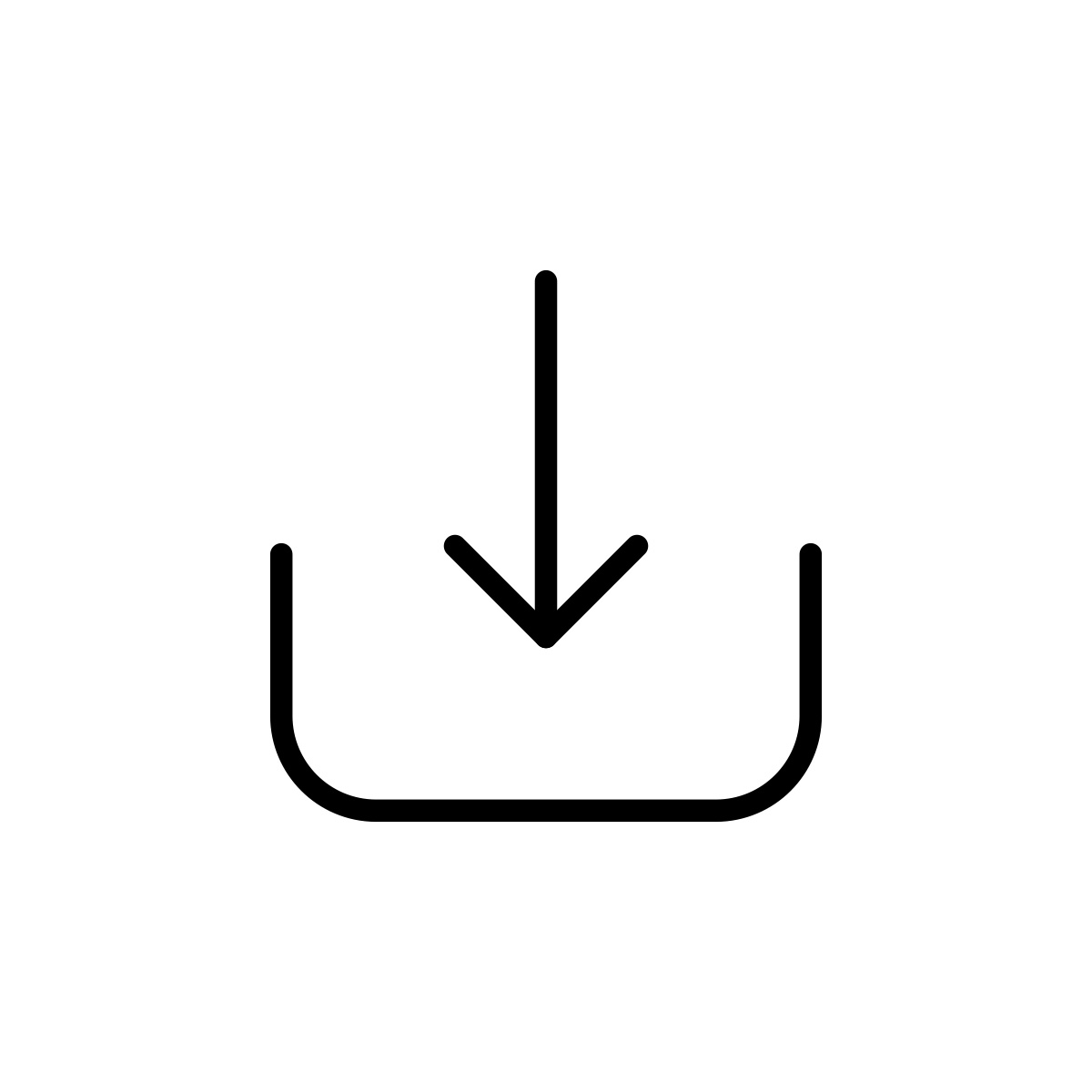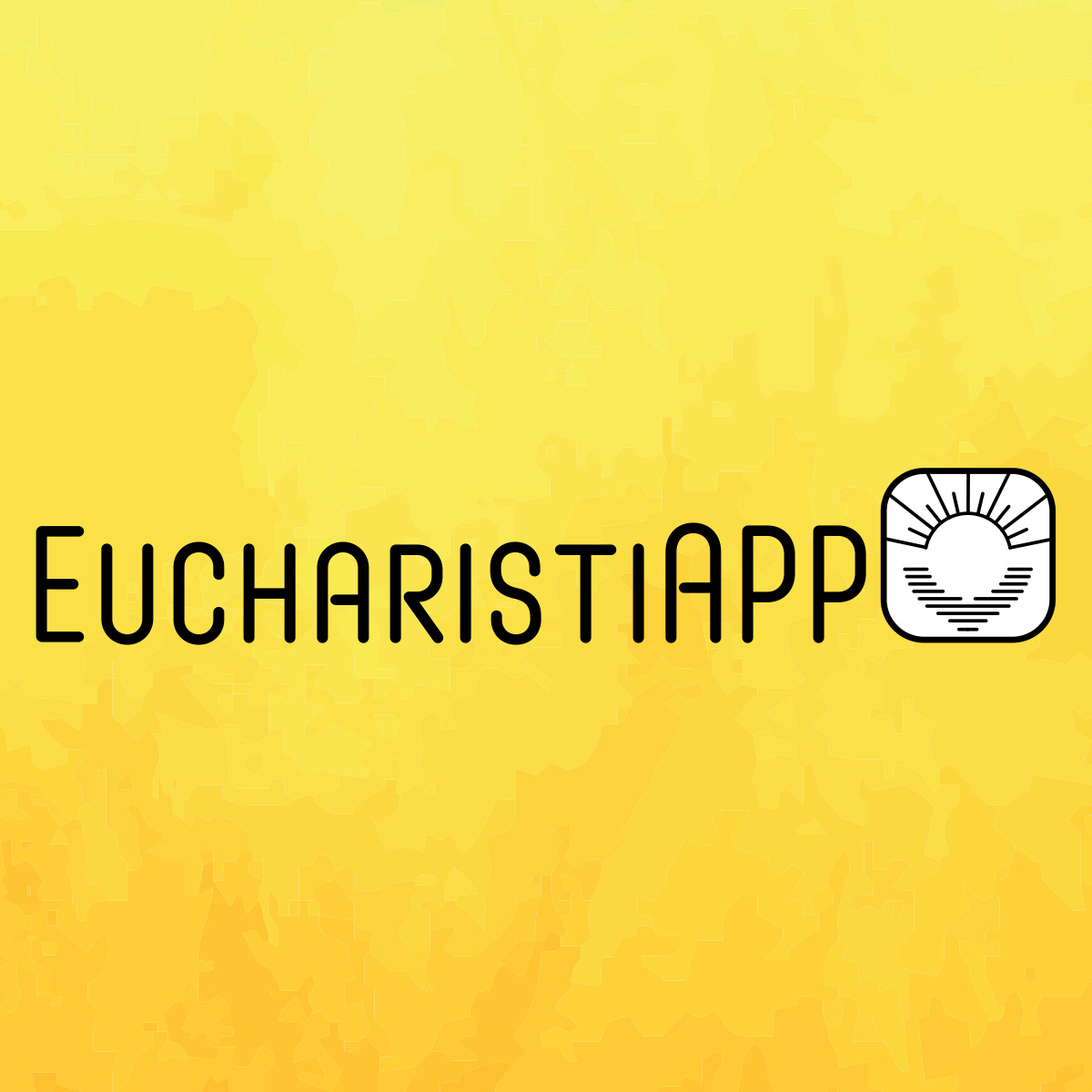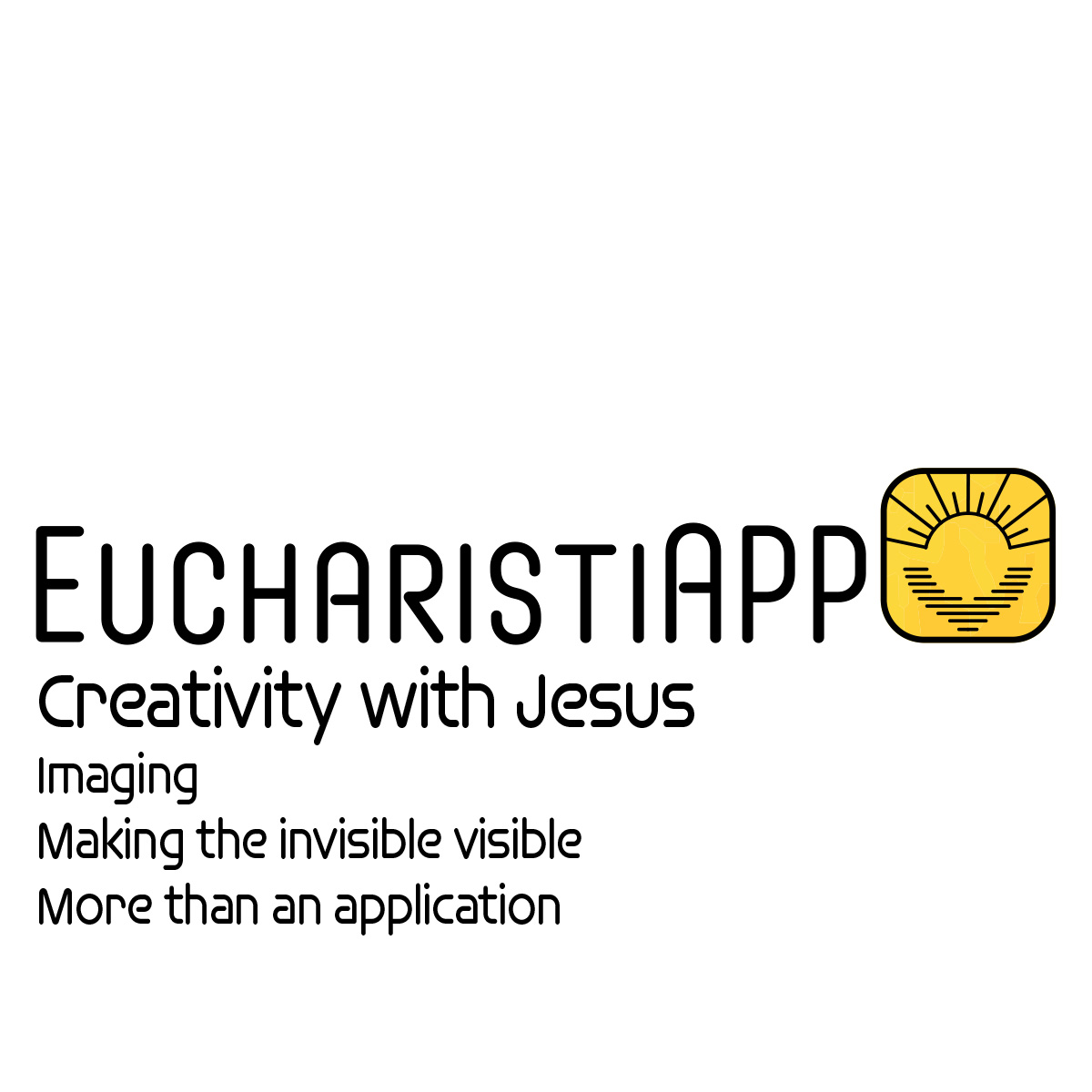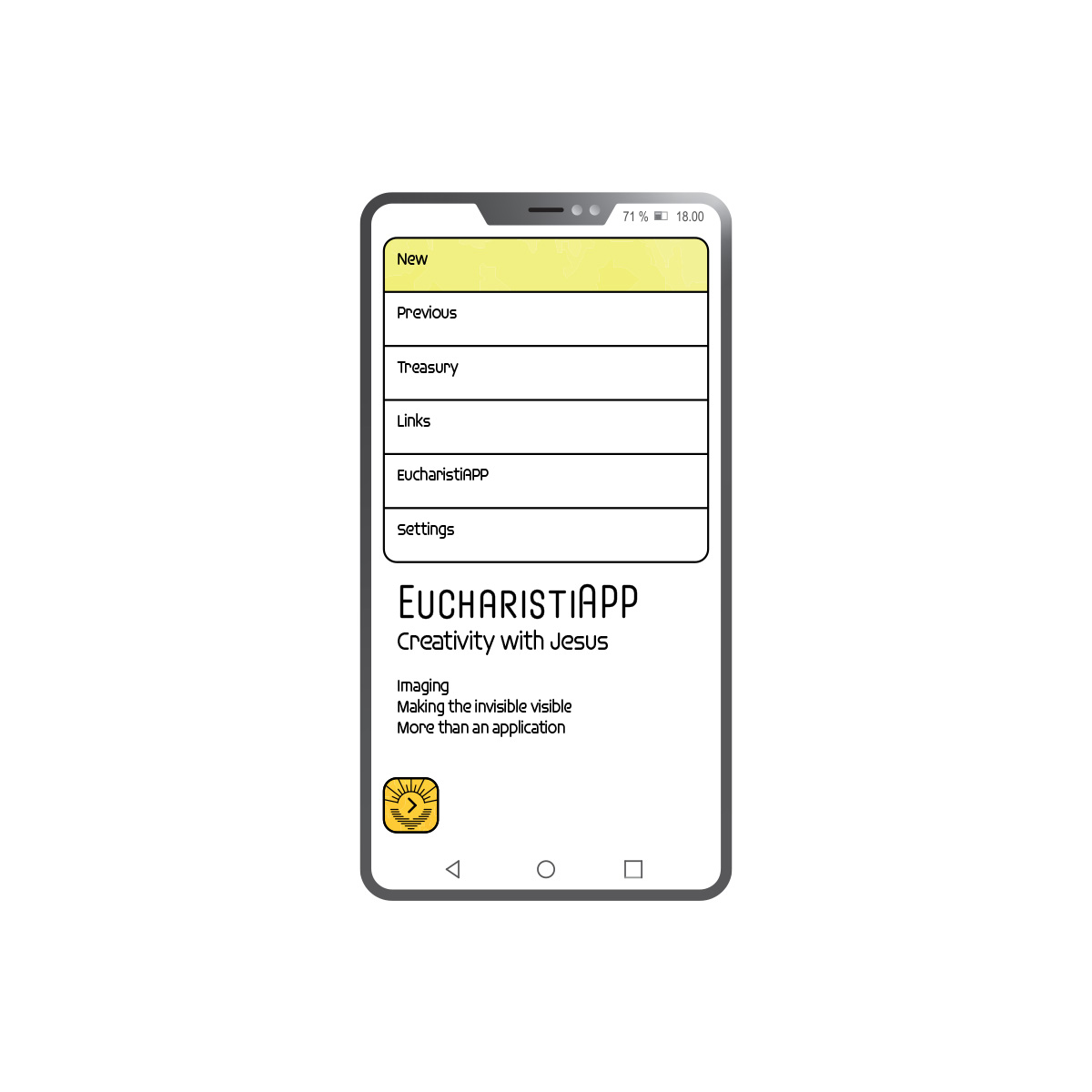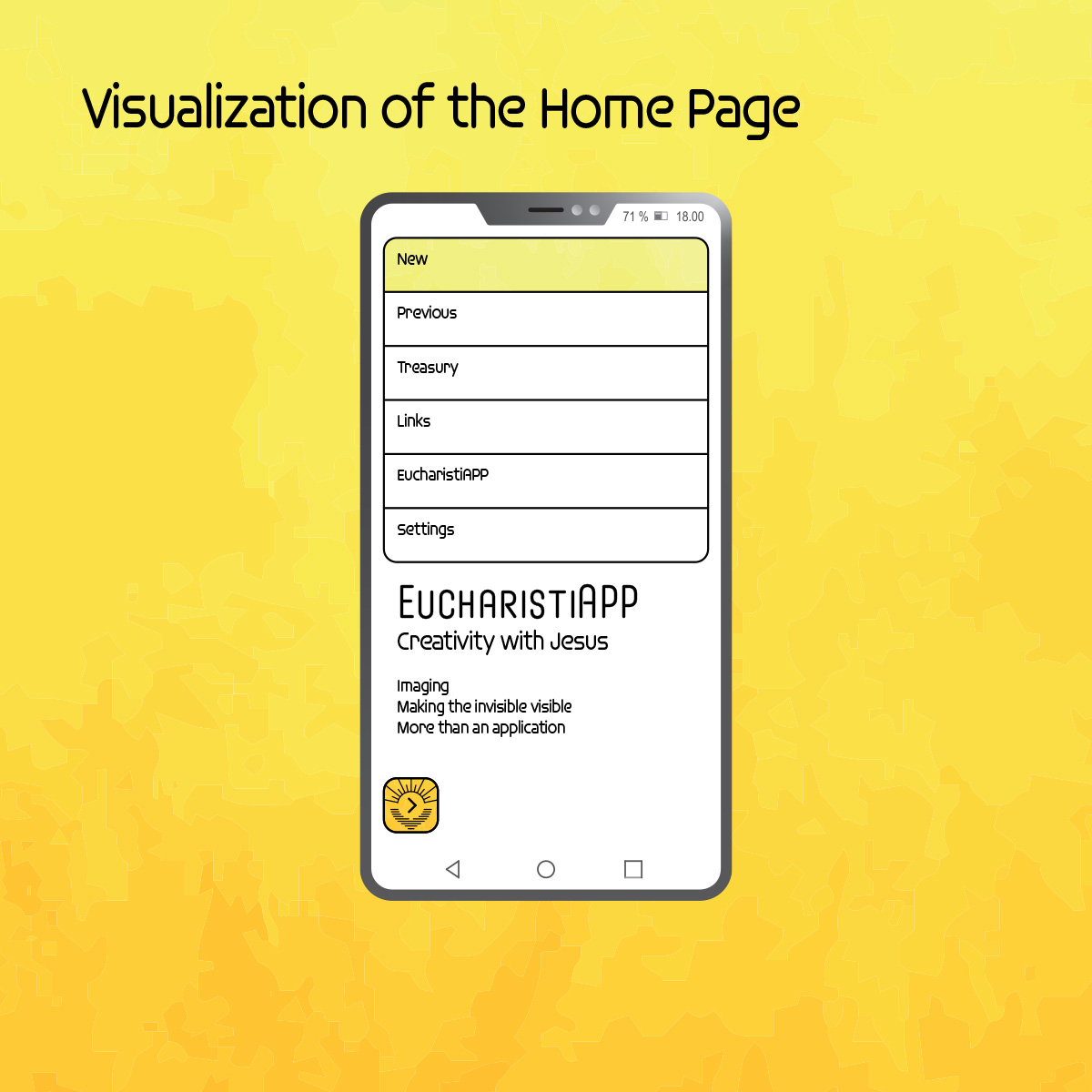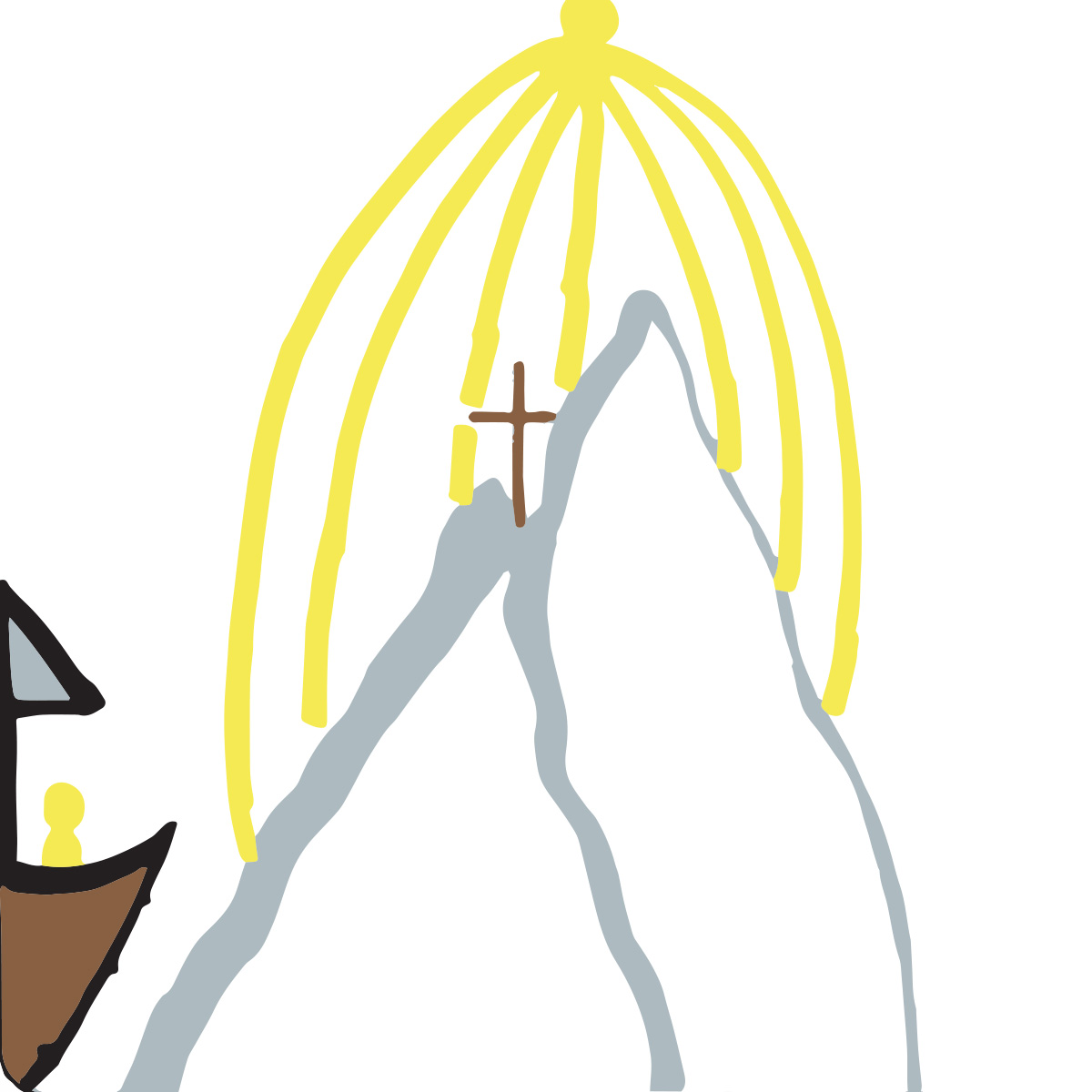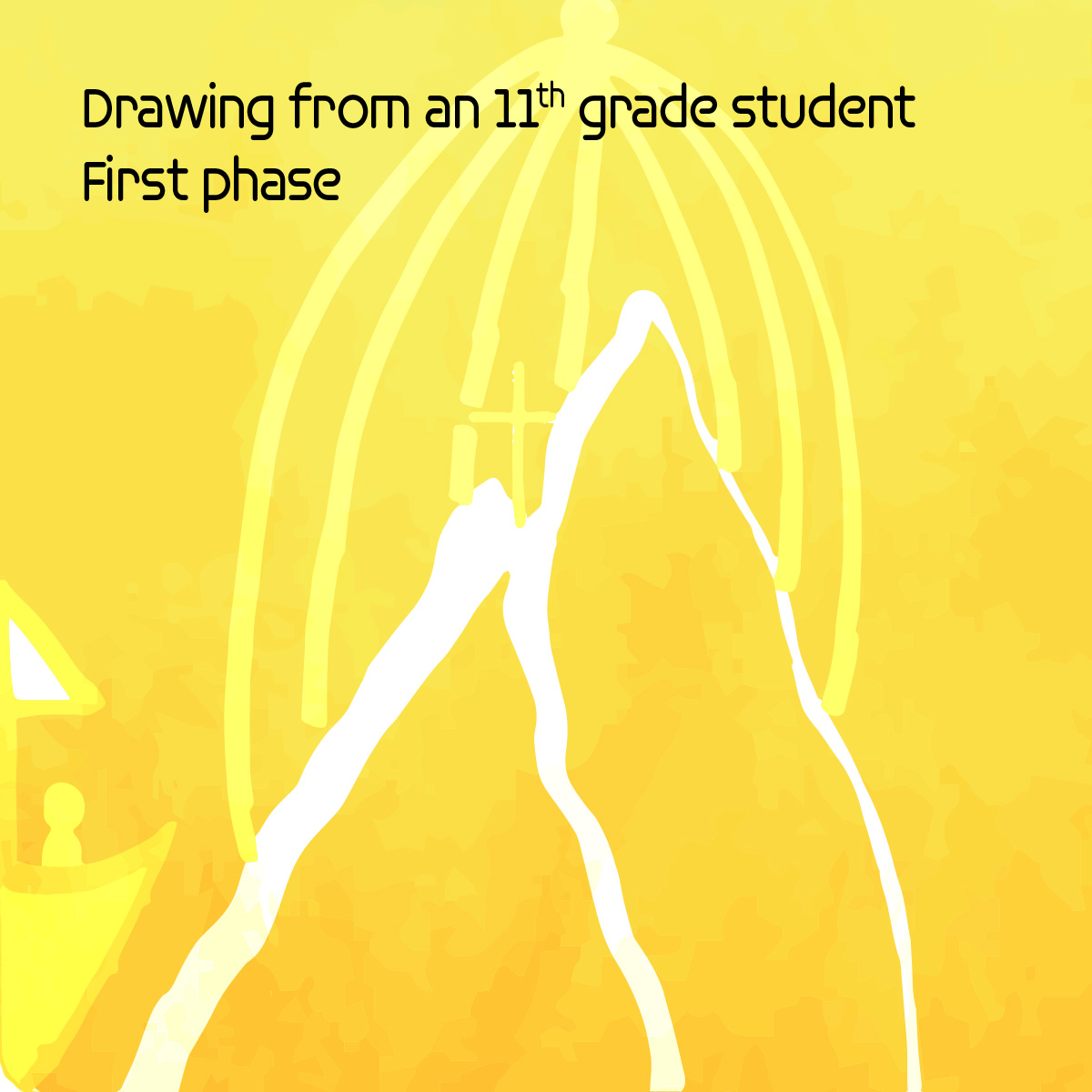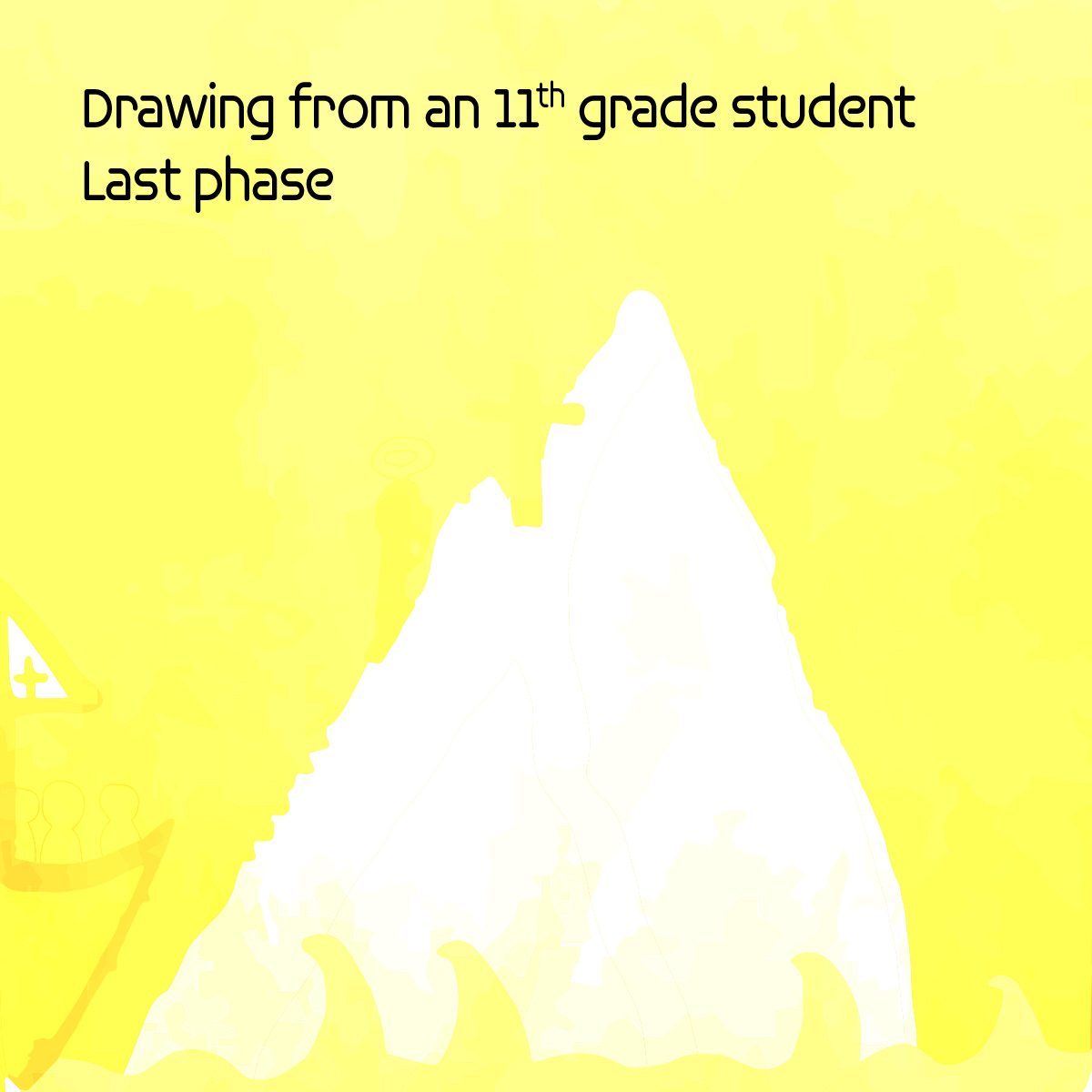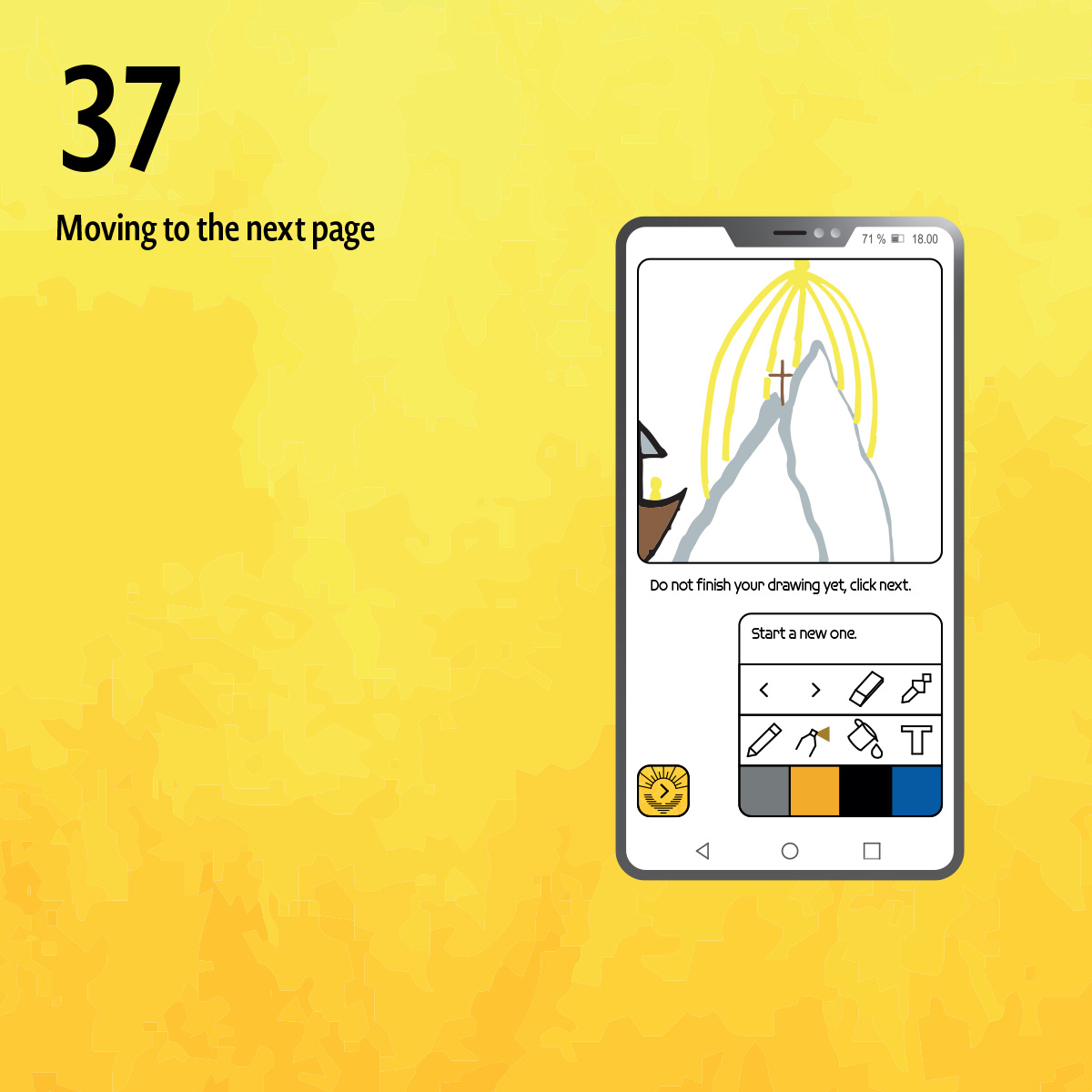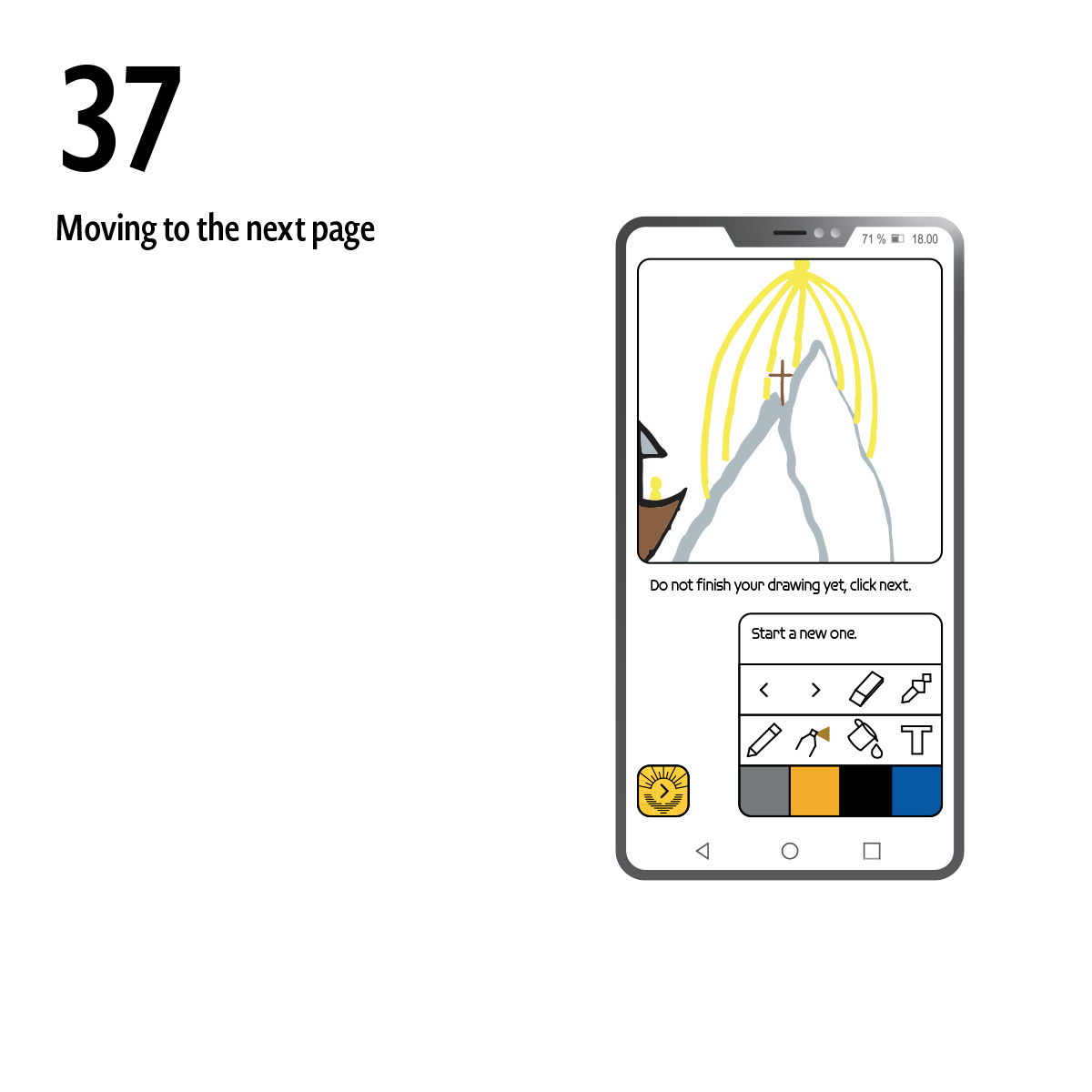In the course of developing the smartphone application EucharistiAPP, our goal was to provide a greater forum for creativity and spirituality. The interface has a unique and uniform design that allows us to reach our goal of allowing people of every age to enter into their “inner space” of contemplative prayer without interruption.
We tested this “digitally” guided spiritual process on people of almost every age using analogical tools such as: verbal directions, drawing on paper, playing of background music. The results showed that this process is applicable to almost every age level and confirmed in us the belief that the creative power of drawing can open up a virtual space to receive God’s Word.
The EucharistiAPP name refers to the Eucharistic dimension of creating and prayer. They can only become a life-giving force and source of our happiness in full, when we are present in them in a Eucharistic way: in full devotion, by making ourselves totally available, completely fitting in the Heavenly Father’s plan.
Jesus calls us to live in a Eucharistic way (cf. “He who eats my flesh and drinks my blood abides in me, and I in him.” Jn 6:56). That is why our application can be used as one of those “aids” (e.g. Scripture, rosary, writing of Saints, spiritual writings, etc.) through which we can explore the richness of the Eucharistic Life even more on a greater level.
The word and the picture together create the fullness of the contemplative process. This premise smoothed the way for planning the application. The process of making a spiritual path visible, “incarnate”, has been already prepared. We tried to do this not only with words but with pictures as well. This method planted into the virtual world opens up all kinds of possibilities. The drawings can be started over, changed, saved. Everybody can create an image in their own simple way. Only a few people have the chance to express their spiritual experiences through the media by directing their own movie. However, through this application, in a simple and understandable way, everyone can be creative even if they did not have the best grade in art class. Also, the drawings are not just creations but they are reflections of the soul. It is a message for each individual. People can see with their eyes what they have created from their hearts during the spiritual process and they are able to take this experience to another level. This is a path of healing which leads to wholeness, that is to say to Jesus.
The creative contemplation was about the transfiguration (Lk 9:28-36). The drawing started considering the words: “led them up a high mountain by themselves”
With the consent from the authors, we introduce the works of art created during the testing process conducted in March of 2020.
Tools used for drawing: paper, color pencils.
The first phase of the development of the EucharistiAPP was a separate project organized by the Esztergom-Budapest Archdiocesan Religious-Education Office, Hungary, as an ongoing formation for catechists. The training project was called a Creative Catechetical Exhibition. In the preparatory phase of the program the catechists who applied participated in an Ideas Completion that set the stage for a common project. The final group of three met online for half a day on February 29, 2020. Then – alongside regular consultation – we tested the movements of the application in Religious Education classes. These took place in schools and in parishes. The results were published on March 25, 2020. The project of the Creative Catechetical Exhibition can be considered as the first step of the creation of the Creative Catechetical Workshop (abbr. CCW).
Click on the image to view and download our presentation with black background (37 MB).
The main pedagogical idea of the creation of the Creative Catechetical Workshop was that catechesis touches the whole person. It invites them to fulfil their mission as Christian people and to evangelize in a more comprehensive way. This can all happen in a deeper way if all the participants experience the creative dimension of the catechesis. The creativity of the catechesis could refer to the manifestation of God’s creating power in one case and the experience of the human desire to create in another case. That is the reason why not just catechists have a place in the CCW, but students and artists who have the ability of creating and have experiences of the Church as well, because Christians who take part in the catechesis “especially if adults, can contribute to catechesis, by pointing out the most effective ways of understanding and expressing the message such as: ’learning while doing’ ” (General Directory for Catechesis, 157).
Click on the image to view and download our presentation with white background (37 MB).


